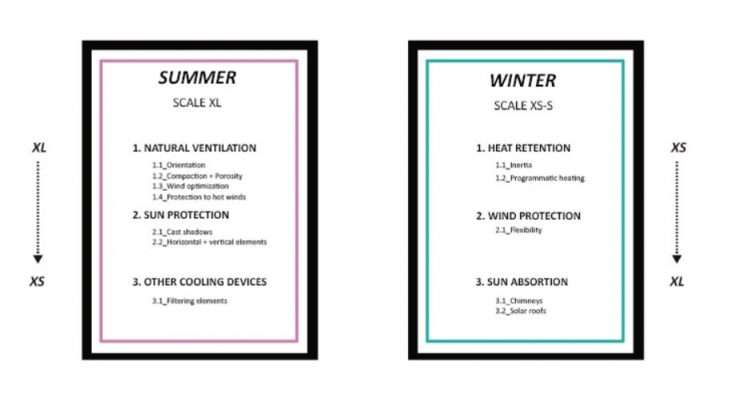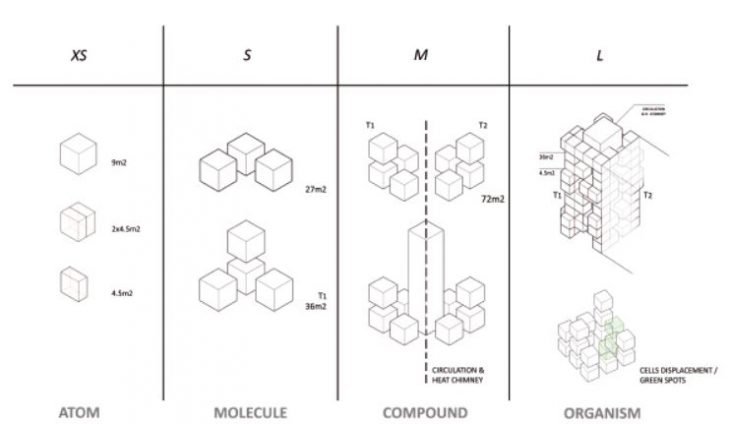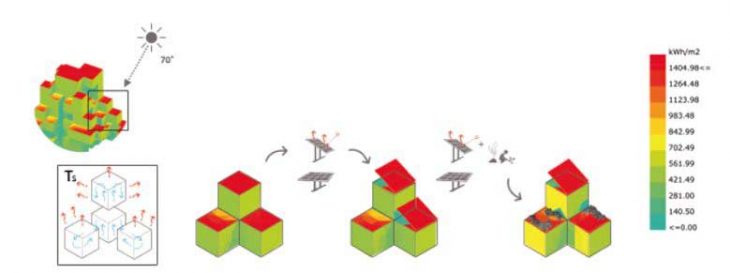Pixelating Architecture
High Density Housing
The project, designed by the students Irene Rodriguez and Juan Secondo, consist in a high density building for 600 people, containing a 20% of space destinated for public uses.

In this way, the implementation of the passive thermal design strategies is crucial in order to aim for a self-sufficient building. By analyzing the different climatic variables in the zone with both the psychrometric chart and the wind wheel, we obtained clear actions that could be taken in order to define the massing and design sequence of the building.

The idea of pixelation, then, came from the intention to obtain the best possible optimization of sun radiation and wind capture. By generating a “texturized” appearance, the possibility of self-shading and cooling is more easily obtained.


In the diagrams above, we can appreciate the sequence of volume definition considering the directions of the winds and solar caption. When the pixelation starts to appear, clear structural volumes start to appear in order to give union to the whole system.
By these initial interventions, it was important to establish a module that would translate the program into a volumetric unit. For this, the definition of a composition logic that would start by the atom, then go to the molecule, then the compound, and finally the organism, was the principal guide in the design process.

The implementation of an in-surface sun radiation analysis was important to test the reliability of the volumetric design. For this, a clear separation between summer and winter was implemented. While southern and west facades will need shading in summer, the need for the sun radiation intake in winter is crucial.
Winter radiation incidence

Summer radiation incidence

In this way, the techniques designed for the mitigation of excess of radiation also generated an interesting possibility regarding the energy usage in two ways: the potential for Photovoltaic energy generation and the intake of sun energy for garden growing and passive heating process.
“High Density Housing – Pixel approach” is a module of IaaC, Institute for Advanced Architecture of Catalonia
Developed at the Masters in Advanced Ecological Buildings and Biocities (MAEBB) in 2019-2020 by students: Irene Rodríguez y Juan Secondo
Faculty: Javier Garcia German
13.1.2019